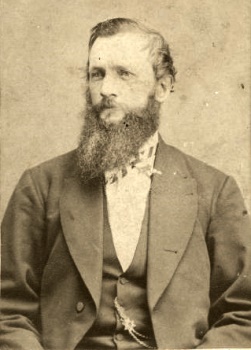The Outer Island Saga
This Land Is Your Land, That Land Is My Land
Back to: A Lighthouse On The Outermost Island
Construction of the Outer Island lighthouse began on Friday, July 18, 1873, the Ashland Press reported, when the steamer Rocket landed a crew of twenty men with 30,000 board feet of lumber and provisions for three months. The news account gave no details on the makeup of the crew, but it appears that, as in the case of the LaPointe light, the Lighthouse Service was represented by a junior-level official.
It also appears that this unnamed functionary was quickly subjected to pressure to commit a similar blunder to that made by Abraham Smolk at Michigan Island. Communications between the Apostle Islands and Detroit were still slow, so it took some time for word to reach Major Godfrey Weitzel, recently-appointed successor to Orlando Poe as Superintendent of the Eleventh Light House District, that the crew was busily building the new lighthouse in the wrong spot. He recalled,
As soon as communication could be had with the parties, it was found that the foreman in disobedience of his orders had started the [construction] on land owned by private parties [near] the reservation. An older and more experienced foreman was sent without delay and he planted the stake for the station at the proper place.
Unfortunately, the "older and more experienced" man was then dispatched to oversee work at another construction site, and it appears that the Outer Island project was turned back to the original foreman. It is clear that, as soon as the senior foreman left the area, the workers once again came under pressure to disregard orders and move the site of the lighthouse.
 |
John H. Knight
Wisconsin Historical Society Photo |
This pressure came from Col. John H. Knight and "Captain" James Chapman, owners of a parcel of land a mile east of the lighthouse site. Their property, which they'd purchased four years previously, included the island's actual northeast point. All evidence suggests that Knight and Chapman bought the tract with the intention of selling it to the government at an inflated price when it came time to build a lighthouse on Outer Island. Their scheme was thwarted when Major Weitzel decided the tower could be just as effectively placed atop the higher bluffs west of their land.
The speculators tried several approaches to put their plan back on track. Not content with turning the screws at the local level, they also took their case to Washington. In February, 1873, after construction had shut down for the winter, they wrote a letter to Congressman A.I. McDill. Presenting themselves as disinterested parties, Knight and Chapman told the Congressman that one "Capt. Albert Stewart of the Propeller Minneapolis," had pointed out to them that a horrible error was about to be committed:
It is a fact patent to everyone that there has been a mistake in locating the new light house on Outer Island.
"Everyone," according to Knight and Chapman, even included a key official of the Lighthouse Service:
"Capt. Stewart says Gen. Weitzel [admitted] it was not in the right place but [said] he had no discretion in the matter.
Along with their letter, the pair sent a petition signed by forty-nine shipmasters and prominent local citizens. Heading the list, James Chapman identified himself as "Captain of the Steamer J. C. Keyes." Also featured prominently was the signature of John D. Angus, the old salt who was now keeper of the LaPointe Light.
The language of the petition was unequivocal:
The undersigned Masters of Steamers and other vessels plying on Lake Superior, having had their attention called to the location of the Light House now being built on Outer Island in Lake Superior... are of the opinion that it will not accomplish the purposes of a light on that Island, required by vessel steamers & c. going to the Head of Lake Superior as it cannot be seen from its present location until about abreast of the island, unless the vessel is very far on the north shore. The light should be located on the Easterly side of the Island on its northern end.
Then as now, a letter to a Congressman gets attention in the bureaucracy.
Continue: Major Weitzel Fires Back
|